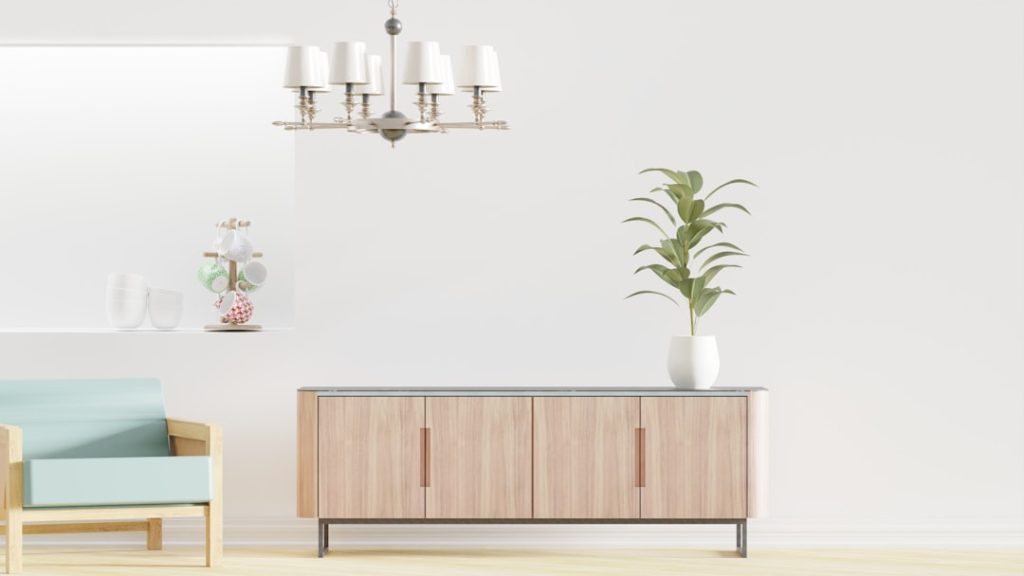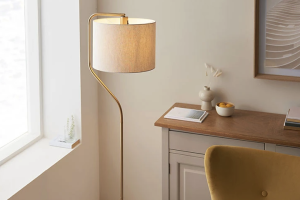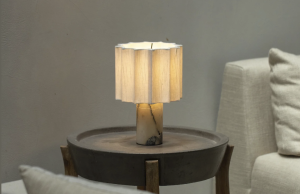A chandelier is a stunning and elegant lighting fixture that can instantly elevate the look and feel of any living room. It adds a touch of sophistication and glamour, making it the perfect addition to your space. Whether your living room has a traditional, modern, or eclectic style, there is a chandelier out there that will complement your decor perfectly.
Chandeliers come in a wide variety of styles and designs, making them incredibly versatile. From crystal chandeliers Westovo that exude luxury and opulence to sleek and minimalist designs that fit well in contemporary spaces, there is a chandelier for every taste and preference. Additionally, chandeliers can be customized to match your living room’s color scheme and overall aesthetic.
Aside from their aesthetic appeal, chandeliers also offer practical benefits. They provide ample lighting for your living room, creating a warm and inviting atmosphere. With the right bulbs, they can also be energy-efficient, helping you save on electricity bills. Additionally, chandeliers can act as a focal point in your living room, drawing attention to the beautiful design and enhancing the overall ambiance of the space.
Finding the Perfect Style: Choosing a Chandelier that Complements Your Decor
When choosing a chandelier for your living room, it’s important to assess your space’s decor and style. Consider the color scheme, furniture, and overall aesthetic of the room. This will help you determine what type of chandelier will best complement your existing decor.
There are various styles of chandeliers to choose from, including traditional, modern, rustic, and vintage designs. Traditional chandeliers often feature intricate details and crystal accents, making them perfect for formal living rooms. Modern chandeliers, on the other hand, have sleek lines and minimalist designs that work well in contemporary spaces. Rustic chandeliers are made from natural materials like wood and metal, adding a touch of warmth and charm to your living room. Vintage chandeliers have a timeless appeal and can add a sense of nostalgia to your space.
To choose a chandelier that complements your living room’s decor, consider the size and scale of the room. A large chandelier may overwhelm a small living room, while a small chandelier may get lost in a large space. Additionally, consider the height of your ceiling. A high ceiling can accommodate a larger chandelier, while a low ceiling may require a smaller or flush-mount chandelier.
Size Matters: How to Determine the Right Chandelier Size for Your Living Room
Choosing the right size chandelier for your living room is crucial to ensure it fits well in the space and doesn’t overpower or underwhelm the room. There are several factors to consider when determining the right chandelier size.
First, measure your living room’s dimensions, including the length, width, and height. This will give you an idea of how much space you have to work with. Next, consider the height of your ceiling. A general rule of thumb is to hang the chandelier so that it is approximately 30 inches above the dining table or seating area.
When it comes to the diameter or width of the chandelier, there are a few guidelines you can follow. For rooms with standard 8-foot ceilings, choose a chandelier that is around 20-24 inches in diameter. For rooms with higher ceilings, you can go larger with a chandelier that is 26-30 inches in diameter. However, these are just general guidelines and ultimately, it comes down to personal preference and the scale of your living room.
Brighten Up: How a Chandelier Can Improve the Lighting in Your Living Room
Proper lighting is essential in any living room as it sets the mood and creates a welcoming atmosphere. A chandelier can greatly improve the lighting in your living room, providing both ambient and task lighting.
Ambient lighting refers to the overall illumination of a space. A chandelier can serve as the main source of ambient lighting in your living room, casting a warm and inviting glow. Depending on the design of your chandelier, it can create beautiful patterns and shadows on the walls and ceiling, adding visual interest to the space.
In addition to ambient lighting, a chandelier can also provide task lighting. Task lighting is focused illumination that is used for specific activities such as reading or working. Some chandeliers come with adjustable arms or shades that allow you to direct the light where it is needed most. This makes them not only aesthetically pleasing but also functional.
When choosing bulbs for your chandelier, consider the type of lighting you want to achieve. LED bulbs are energy-efficient and long-lasting, making them a popular choice. However, if you prefer a warmer and more traditional look, incandescent or halogen bulbs may be more suitable. It’s important to check the maximum wattage allowed for your chandelier and choose bulbs accordingly to avoid overheating or damaging the fixture.
Material Matters: Exploring the Different Materials Used in Chandelier Design
Chandeliers are made from a variety of materials, each with its own unique characteristics and aesthetic appeal. The material you choose for your chandelier can greatly impact its overall look and feel, as well as how it complements your living room’s decor.
Crystal is one of the most popular materials used in chandelier design. Crystal chandeliers are known for their elegance and opulence, adding a touch of luxury to any space. They reflect light beautifully and create a dazzling display of sparkle and shine. However, crystal chandeliers can be quite expensive and require regular cleaning to maintain their luster.
Metal is another common material used in chandelier design. Metal chandeliers can be made from various metals such as brass, bronze, or iron. They offer a more industrial or rustic look, depending on the finish and design. Metal chandeliers are often more affordable and durable than crystal chandeliers, making them a popular choice for many homeowners.
Other materials used in chandelier design include glass, wood, and fabric. Glass chandeliers can range from clear and transparent to colored and frosted, adding a unique and artistic touch to your living room. Wood chandeliers have a natural and organic feel, perfect for rustic or farmhouse-style spaces. Fabric chandeliers feature shades or covers made from various fabrics, adding a soft and cozy touch to your living room.
When choosing the material for your chandelier, consider the overall style and decor of your living room. Choose a material that complements the existing elements in the space and enhances the overall aesthetic.
Hanging Your Chandelier: Tips for Proper Installation and Placement

Proper installation and placement of your chandelier are crucial to ensure it is safe, secure, and visually appealing. Here are some tips to help you hang your chandelier correctly:
1. Turn off the power: Before starting any installation work, make sure to turn off the power to the area where you will be working. This will prevent any accidents or electrical shocks.
2. Use a sturdy ceiling mount: Ensure that the ceiling mount you use is strong enough to support the weight of your chandelier. If necessary, consult a professional electrician or contractor for assistance.
3. Measure and mark the placement: Use a measuring tape to determine the desired height at which you want to hang your chandelier. Mark this spot on the ceiling using a pencil or tape.
4. Install a junction box: If there isn’t already a junction box in place, you will need to install one before hanging your chandelier. This will provide a secure and stable base for the chandelier.
5. Attach the chandelier: Follow the manufacturer’s instructions to attach the chandelier to the junction box. Make sure all connections are secure and tighten any screws or bolts as needed.
6. Adjust the height: Once the chandelier is attached, adjust the height as necessary. It should be positioned at a height that allows for proper lighting and doesn’t obstruct any views or pathways.
7. Test the lighting: After installation, turn on the power and test the lighting to ensure everything is working properly. Make any necessary adjustments or repairs before fully securing the chandelier.
Cleaning and Maintenance: Keeping Your Chandelier Looking its Best
Regular cleaning and maintenance are essential to keep your chandelier looking its best and functioning properly. Here are some tips to help you clean and maintain your chandelier:
1. Turn off the power: Before cleaning your chandelier, make sure to turn off the power to avoid any electrical accidents.
2. Dust regularly: Use a soft, dry cloth or feather duster to remove dust from your chandelier on a regular basis. Avoid using harsh chemicals or abrasive materials that could damage the finish or crystals.
3. Clean crystals with care: If your chandelier has crystal accents, use a mixture of mild dish soap and warm water to clean them. Gently wipe each crystal with a soft cloth or sponge, taking care not to apply too much pressure.
4. Check for loose parts: Periodically check your chandelier for any loose parts or connections. Tighten screws or bolts as needed to ensure everything is secure.
5. Replace bulbs as needed: If a bulb burns out, replace it promptly with a new one of the same wattage and type. This will ensure proper lighting and prevent any strain on the chandelier’s electrical system.
6. Consider professional cleaning: If your chandelier is particularly intricate or valuable, you may want to consider hiring a professional chandelier cleaner. They have the expertise and tools to clean your chandelier safely and effectively.
Energy Efficiency: Choosing a Chandelier that Saves Energy and Money
In today’s environmentally conscious world, energy efficiency is an important consideration when choosing any lighting fixture, including chandeliers. Here are some tips for choosing an energy-efficient chandelier:
1. Look for LED options: LED bulbs are highly energy-efficient and can last up to 25 times longer than traditional incandescent bulbs. They also produce less heat, reducing the strain on your chandelier’s electrical system.
2. Consider dimmable options: Dimmable chandeliers allow you to adjust the brightness according to your needs, saving energy when full illumination is not required.
3. Choose the right size: Opt for a chandelier that is appropriately sized for your living room. A larger chandelier may require more bulbs and consume more energy.
4. Check for energy certifications: Look for chandeliers that have been certified by organizations such as ENERGY STAR, which ensures that the fixture meets strict energy efficiency standards.
5. Use timers or sensors: Consider installing timers or motion sensors to control the lighting of your chandelier. This will ensure that it is only on when needed, saving energy and money.
Choosing an energy-efficient chandelier not only helps reduce your carbon footprint but also saves you money on electricity bills in the long run.
DIY Chandelier Projects: Creating Your Own Unique Chandelier for Your Living Room
If you’re feeling creative and want to add a personal touch to your living room, consider creating your own DIY chandelier. Here are some benefits of DIY chandelier projects:
1. Customization: DIY chandeliers allow you to create a unique and personalized lighting fixture that perfectly matches your living room’s decor and style.
2. Cost savings: Creating your own chandelier can be more cost-effective than purchasing a ready-made one. You can use materials that are readily available and affordable, such as recycled or repurposed items.
3. Creative expression: DIY chandelier projects offer an opportunity for creative expression and can be a fun and fulfilling activity. You can experiment with different materials, colors, and designs to create a one-of-a-kind piece.
Some DIY chandelier project ideas include using mason jars, wine bottles, or old bicycle wheels as the base for your chandelier. You can also incorporate natural elements like driftwood or seashells for a beachy vibe. The possibilities are endless, so let your imagination run wild!
Elevating Your Living Room with a Stunning Chandelier
In conclusion, adding a chandelier to your living room is a surefire way to elevate its look and feel. The elegance and sophistication that a chandelier brings cannot be matched by any other lighting fixture. With the wide variety of styles, designs, and materials available, you can find the perfect chandelier that complements your living room’s decor and style.
When choosing a chandelier, consider the size of your living room, the height of your ceiling, and the overall aesthetic you want to achieve. Proper installation and placement are crucial to ensure the safety and visual appeal of your chandelier. Regular cleaning and maintenance will keep it looking its best and functioning properly.
Whether you choose a ready-made chandelier or embark on a DIY project, adding a chandelier to your living room will undoubtedly enhance its ambiance and create a warm and inviting space for you and your guests to enjoy. So go ahead, indulge in the elegance of a chandelier and transform your living room into a stunning sanctuary.





More Stories
Elegant Cold Marble Base Table Lamp for Dining Room
Enhance Your Living Room with a Bamboo Glass Table Lamp
Rustic Industrial Iron Wall Lamp: Perfect for Kitchen